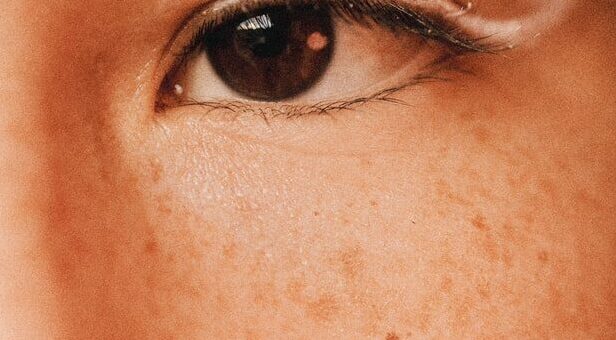What causes pigmentation?
There are a few different factors we need to be aware of, the sun being a huge one, stress is a big one, and of course those hormones. There are a few different pathways in the body where pigment develops but treatments are all quite similar. Bearing in mind hormonal pigment is a little more difficult to treat.
Let us begin with sun-induced pigment. The sun’s ultraviolet rays are a powerful activator of melanocytes which reside and are stationary in the lower layers of the epidermis, the melanocytes are responsible for producing pigment. The sun’s solar energy stimulates melanocyte activity which in turn produces melanosomes that attach to cells that are making their way up to the surface of the skin. The melanosome then deposits melanin onto the skin to protect the DNA of the cell from mutation. This looks like a tan.
Melanin (pigment) is your skin’s defence mechanism against harmful UV radiation. It is the body’s way of coping with excess radiation. Melanin absorbs this heat energy to prevent it from damaging DNA and cellular organelles, both vital for normal skin function.
Any time you expose your skin to sun, the melanocytes in your skin become more active.
It is important to use sunscreen and appropriate skin care to protect against UV radiation and water loss. When our skin is dehydrated it is prone to further pigmentation as a result.
Hormonal pigmentation
What we do know is when hormone levels change, we see an increase in pigmentation on the face and body. Clients who are either pregnant, on a contraceptive pill or sun sensitive medications where oestrogen and progesterone levels are disrupted tend to have increased amounts of pigmentation.
Treatments for pigmentation
Stabilising your hormones is a start. Medication can also alter hormone levels so if there is a natural alternative – take it!! Look at your stress levels and your diet which you should keep as ‘clean’ as possible. Take evening primrose oil! This little beauty is amazing at stabilizing your hormones.
Next, you need to be on a full system of pigment fading skincare. Pigment needs to be tackled from different areas and usually a system does this best. wear a sunscreen.
When it comes to professional treatments, you can have IPL, laser or chemical peels. Chemical peels are stronger than the exfoliants you can buy yourself from a retail store. This is one good reason to get a facial from time to time (you get a much deeper clean and exfoliation). Medical-grade peels are the strongest as they help remove the most skin pigment.
You will need a series of treatments. Not just one or two. Treating pigment takes time so we typically need to treat the skin every 2-4 weeks with a combination of rebuilding treatments and peels. It can take several months or up to a year to complete, depending on your skin and your treatment goal.
So please look after your hormones, use sunscreen, come in for a consultation, grab some great home care and we will get on top of this pigment problem!!
Call Nepean Day Spa on 03 5986 9824 and we can answer any queries you may have. You can also find out more about our day spa menu at https://nepeandayspa.com.au/.
You can find us at https://nepeancountryclub.com.au/. We hope to see you soon!
Siobhan


Recent Comments